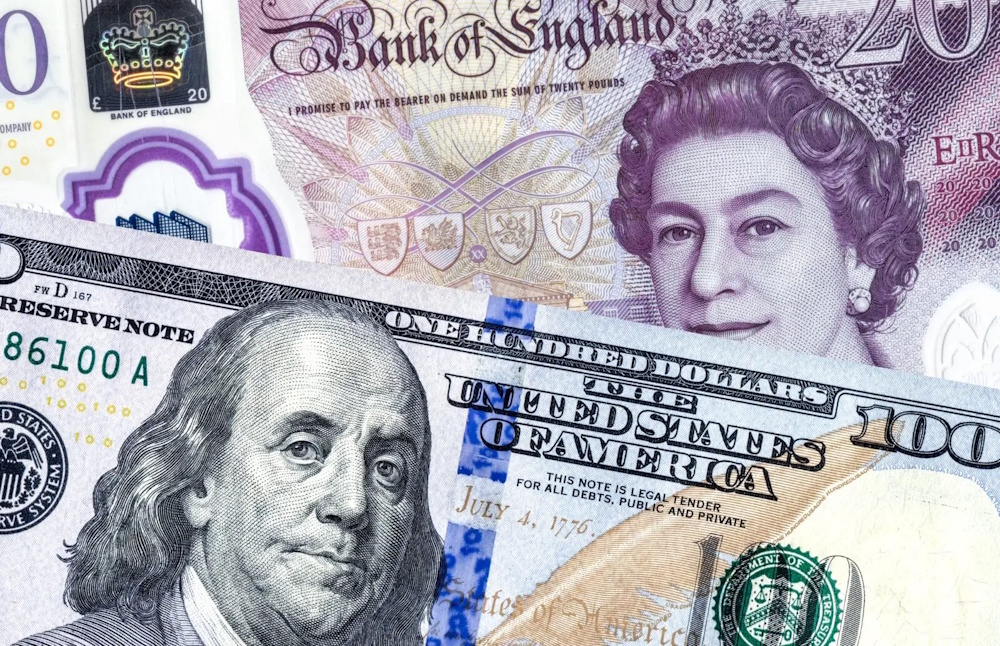The GBP/USD pair experienced a significant downturn this week, dropping to 1.3280, marking its lowest point in two months. This movement was influenced by a robust U.S. Dollar Index around 99.56 and growing concerns regarding the UK’s budget deficit, which negatively impacted market sentiment. The action highlights the extent to which the market is adjusting risk among G10 currencies in light of the convergence of global trade tensions and domestic fiscal challenges. The demand for the dollar continues to be unwavering. In light of the Federal Reserve’s easing outlook The U.S. Dollar continues to show strength despite the anticipation of a 50-basis-point Fed rate cut by December, with the reports indicating an 80% probability. Investor sentiment has been influenced by risk aversion due to political instability in Japan and France, alongside the resurgence of the U.S.–China tariff conflict, resulting in a strong preference for the Greenback. The DXY has increased by 2.4% month-to-date, effectively constraining Sterling’s recovery efforts, as traders seem to overlook dovish Fed rhetoric amid ongoing global uncertainty.
In the UK, the outlook worsened as fiscal projections became more pessimistic. The most recent Treasury report indicated that government borrowing may surpass £120 billion in FY2025, reflecting an 18% increase from previous estimates. The expanding fiscal gap has raised renewed worries regarding debt sustainability and adherence to policy, particularly as the Bank of England’s quantitative tightening persists in depleting liquidity. The gap between UK 10-year Gilts and U.S. Treasuries has contracted to a mere 27 basis points, marking its lowest level since early summer. This development diminishes the carry attractiveness of Sterling and may lead to increased outflows from UK assets. The technical outlook for GBP/USD appears to be becoming more precarious. Following a decline to 1.3259, the pair experienced a slight recovery; however, it continues to face resistance beneath the previous support level of 1.3340–1.3370, which aligns with the 61.8% Fibonacci retracement of the August rally. The pair has now recorded three consecutive sessions beneath its 100-hour moving average at 1.3388, while the 200-hour moving average at 1.3422 establishes a significant resistance level for any potential recovery. The price action in the range of 1.3320–1.3340 indicates that buyers are trying to uphold the support level. However, momentum indicators reveal a different story, with the RSI at 42 and the MACD remaining in significantly negative territory, suggesting ongoing bearish dominance.
According to data, there has been a significant widening in 3-month GBP risk reversals, resulting in an increased premium for downside protection. This indicates that institutions are progressively factoring in additional weakness of the Sterling as we approach year-end. The GBP experienced a 0.2% decline on Friday, positioning it as the second-worst performer among G10 currencies, trailing only the Norwegian krone. Institutional positioning remains supportive of the Dollar, as speculative long positions on the DXY have increased by 8% week-over-week. President Trump’s announcement of a new round of tariffs on China starting November 1 had significant implications for the currency market. As equities experienced a significant decline and safe-haven flows increased, the Pound was unable to take advantage of even the brief reductions in yields. Market participants are increasingly concerned about a potential global economic slowdown that may negatively impact UK exports and industrial performance. The FTSE 100 experienced a decline of 1.9% over the week, and the GBP/USD fell by over 1.4%, indicating stress across the markets.
If sellers succeed in achieving a sustained close beneath 1.3260, the subsequent support level is positioned around 1.3140, which is characterized by the 38.2% retracement of the 1.2099–1.3787 uptrend. This level signifies a pivotal turning point for the medium-term trajectory. A decline below current levels may pave the way towards 1.3090, a level that was last examined in February. Conversely, a clear rebound above 1.3420 would realign short-term momentum to neutral; however, a sustained recovery necessitates a breakthrough at 1.3525, which corresponds with late-August highs and the 50-day EMA. Analyzing the situation, the increase from 1.0351 (2022 low) to the 2024 highs around 1.3787 seems to be corrective within a long-term bearish channel that has characterized GBP/USD since the 2007 peak at 2.1161. The medium-term projection of 61.8% from 1.0351 to 1.3433, anchored from the 2025 low of 1.2099, indicates a potential upside near 1.4004; however, this scenario is improbable unless there is a significant improvement in macro data. The 55-week EMA, presently positioned at 1.3173, acts as a pivotal support level; a consistent breach beneath this threshold would validate a resurgence of bearish momentum aimed at 1.2099.

